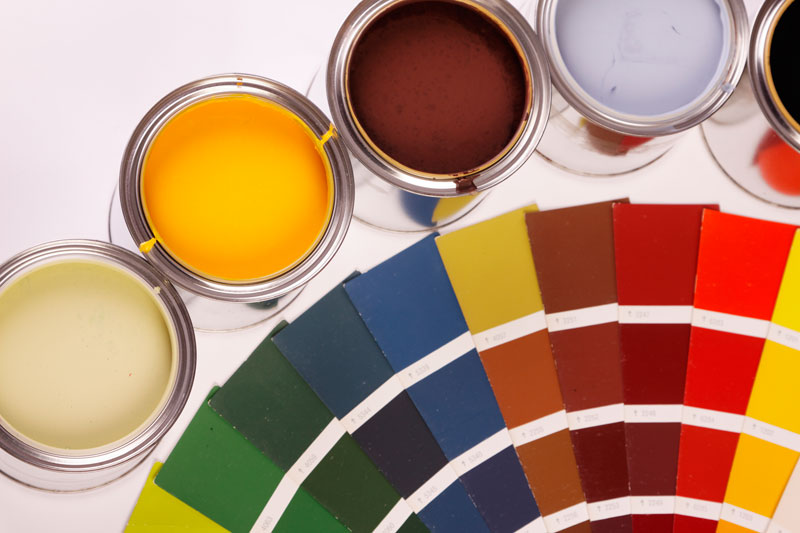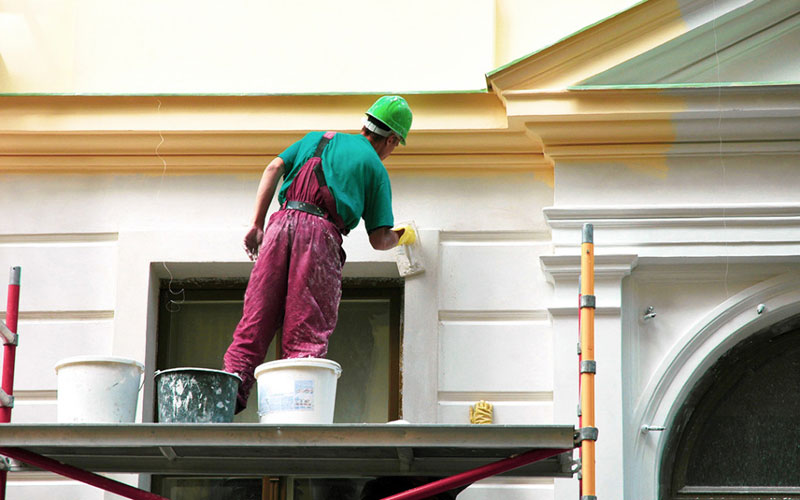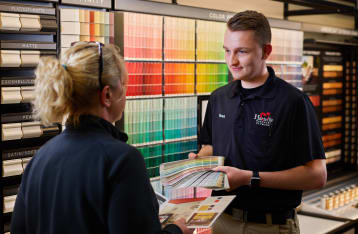Quality exterior painting works as an added layer of protection from the elements, helping to keep your building exterior safe from weather damage, insects, and dust. The exterior is heavily exposed to extreme weather elements such as hot sunshine and rains. Due to the exposure of UV rays and other external factors, the life cycle of the exterior paint is often reduced. So, it is pivotal to select and apply the correct external wall paint.
Given below are a few factors that should be considered for the selection of external wall paint.
Colour for your exterior wall paint
How deep a colour have you chosen? How exposed to the elements will it be? These are a few questions you should ask yourself while deciding on the colour of the paint. When it comes to deciding the colour scheme for the exterior of your house then you have to keep in mind one basic thing. Dark colours may be your favorite but choosing it as the colour for the painting of your exterior walls is a very bad idea and just never do that. Dark colors absorb heat and dust will be very much visible on it thus making it a bad idea to choose black for the exterior wall. Do check whether the paint is formulated with resins and tinted with right colorants which ensure colours that remain vibrant for years to come.

Coating for your exterior wall paint
Exterior wall coating systems tend to have a high resin content which can provide great elasticity and flexibility and good adhesion qualities. Examples of some resins that can be found in various coating systems are- Pliolite, Alkyd, Polyester and Acrylic. Exterior wall coatings are decorative treatments formulated for exterior masonry surfaces. Exterior wall coating helps to provide an attractive finish to the exterior of a building and enables long life spans so they are usually very hard wearing and durable. Acrylic paint is one of the best choices as it is UV resistant. Extended exposure to wind, rain, humid conditions and sunlight wears out paint. Select paint that protects against the dominant weather condition. If it rains for the better part of the year, use oil-based paints to protect against wind and rain.

Low VOC for your exterior wall paint
Pollution from the chemicals in paint happens in several ways: while it is being applied; as it dries; and during improper storage and disposal. One such source is VOC.Volatile organic compounds, or VOCs, are carbon-containing substances that easily become vapors or gases. They can be present in paints, coatings and cleaning products.Paints labeled “low-VOC” should contain fewer than 50 grams per liter of volatile compounds, if they meet the Green Seal standards. Since there is no one regulatory standard, the low-VOC designation means different things depending on which body is certifying it, but 50 grams is the common bar for architectural flat paints.

Elongation properties for your exterior wall paint
Internal stress has often been mentioned as an important factor in these types of degradation of exterior wall paint. Flexibility and tensile strength varied over a wide range for different types of coatings. High strength films tend to be less flexible, which was found for epoxy, acrylic and polysiloxane coatings. The polyurethanes were very flexible. Elongation properties, therefore, become important for the selection of exterior paint. The elongation defines the ductility of material and consequently its capability of undergoing deformation without breaking. The combination of high ultimate tensile strength and high elongation leads to materials of high toughness.

Waterproof advantages for your exterior wall paint
Exterior surfaces should be given one additional coat for better protection as these areas are prone to water accumulation. Using waterproof paint is one of the best options for it. Any water that does hit your home will simply run off-preventing water penetration and reduce dirt and staining of the walls. The paint to be used must possess waterproofing ability, high strength, high flexibility and great resistance to weather conditions. Paint must be vapour-permeable to allow breathing of the structural element and highly elastic to ensure crack-bridging. Also, it should provide strong bonding to the substrate and excellent coverage. Moreover, it possesses excellent resistance to washing. Hydrophobic paints & coatings are 100% water repellent and are perfect choice, This paint protects the outside cladding of your home from the direct penetration by water.

Washability criteria for your exterior wall paint
Washability is also an important consideration when selecting the paint finish. Paints selected should be able to adhere to repeated cleanups without compromising colour richnessor finish. Washable paints are hugely popular as they are easy to maintain and are widely popular. It gives good outdoor resistance, even in environments exposed to harsh conditions, such as marine and industrial environments, or in climates characterized by considerable sudden changes in temperature. The acrylic resin is one of the preferred material options for this type of product. It makes resistance against washing and the alkaline environment typical of cement-based surfaces and plastering in general.

Getting the right expert for your exterior wall paint
Experienced painters at Groovy Hues will get the work done in a short time. They save you the trouble of picking colors and types of paint. They also know how to mix them for a durable finish. Buying high-quality, expensive paint is not guaranteed that you will use it correctly and attain the same results as a professional paint expert would.

Next time you are selecting paint for your exterior walls keep these factors in mind and choose wisely.
Image Source: starpaint.co.za, greenpropainting.com, pintrest.com, stocorp.com, nipponpaint.co.in, hartvillehardware.com

